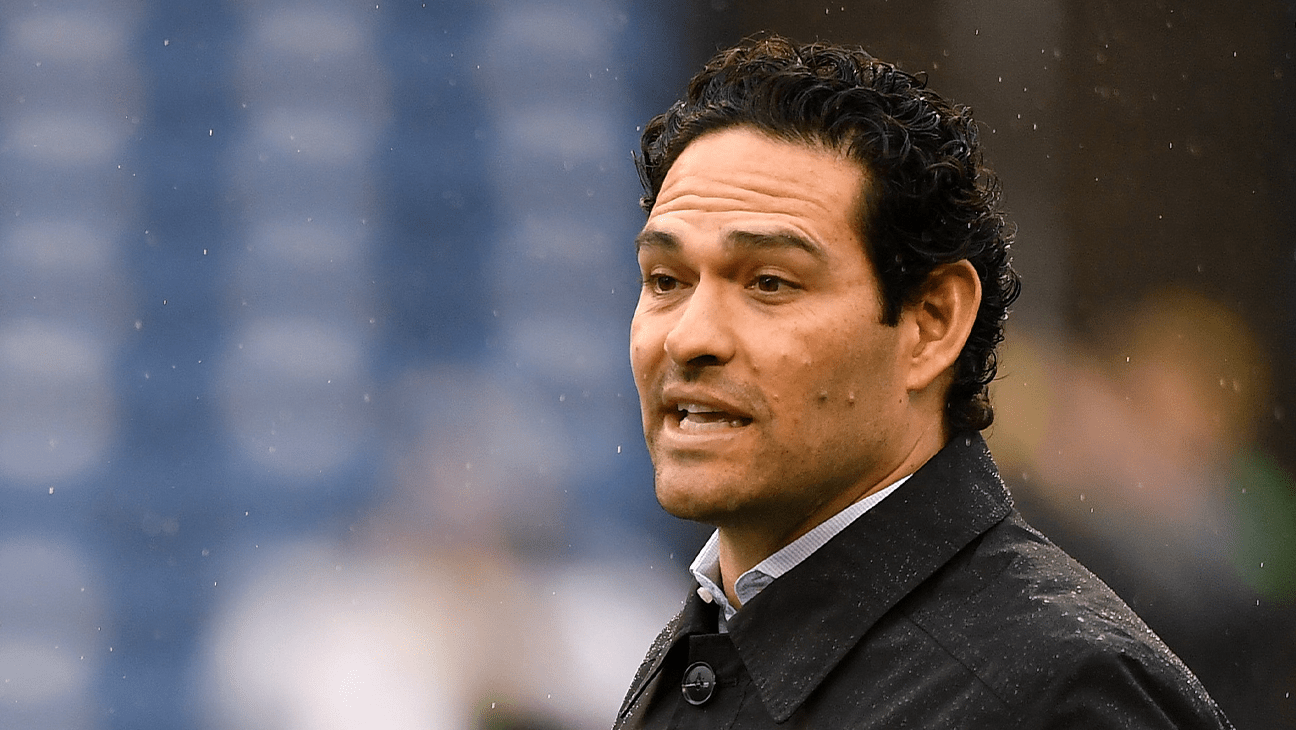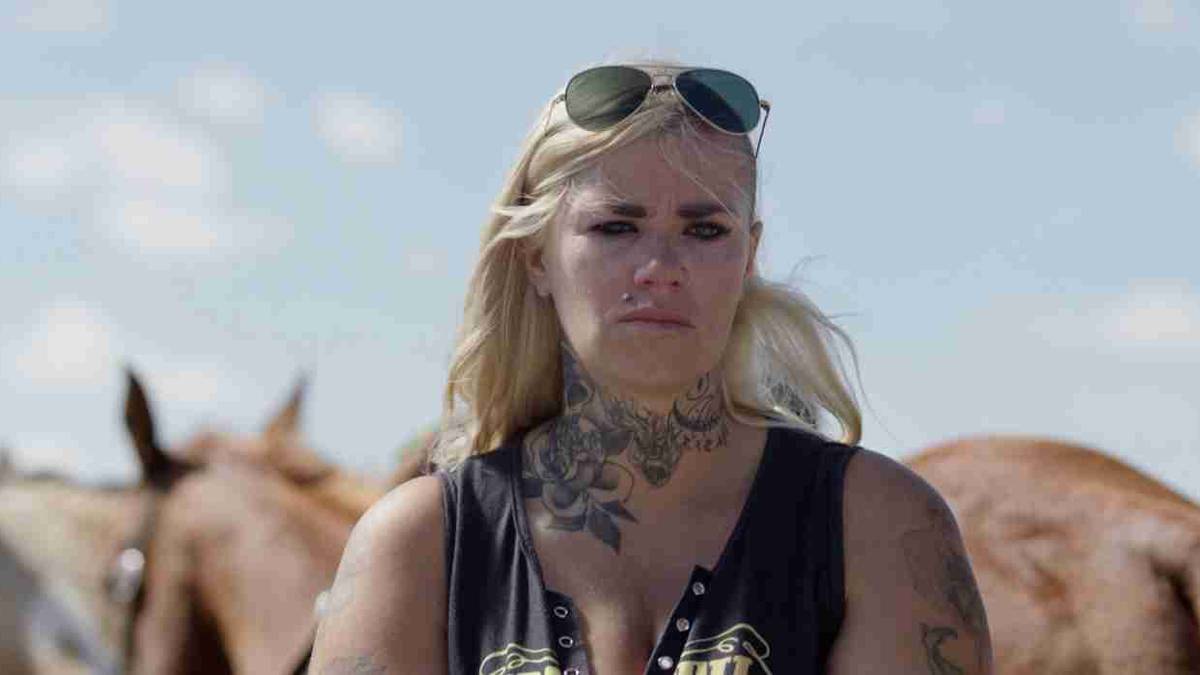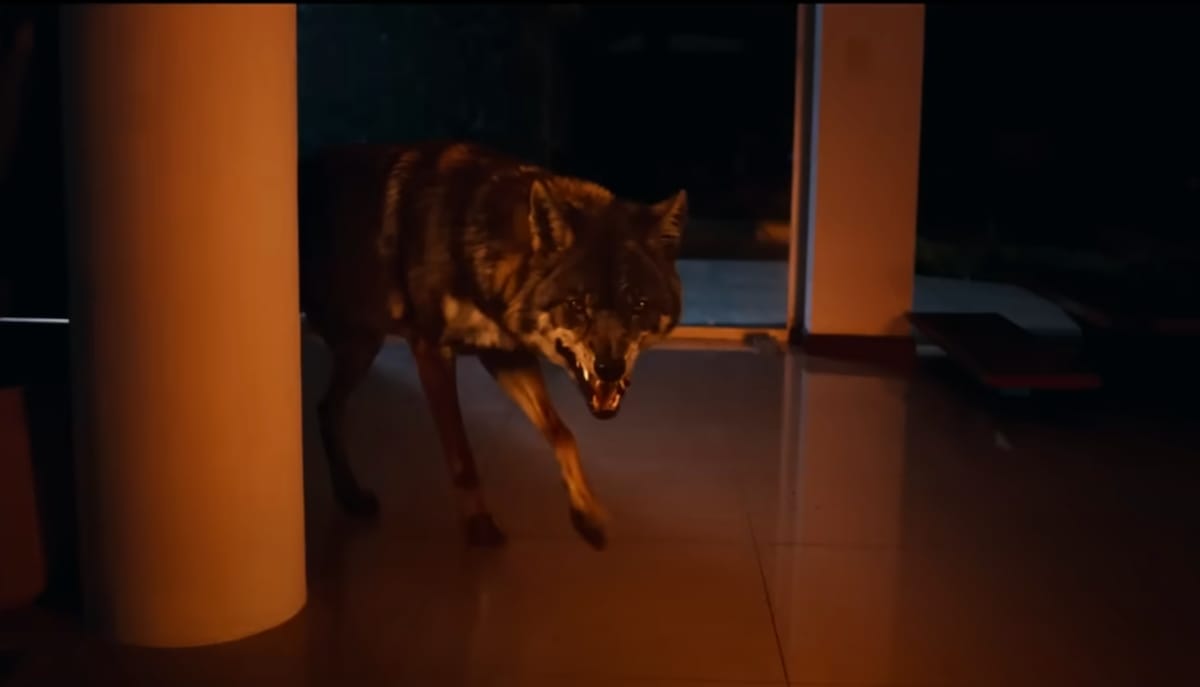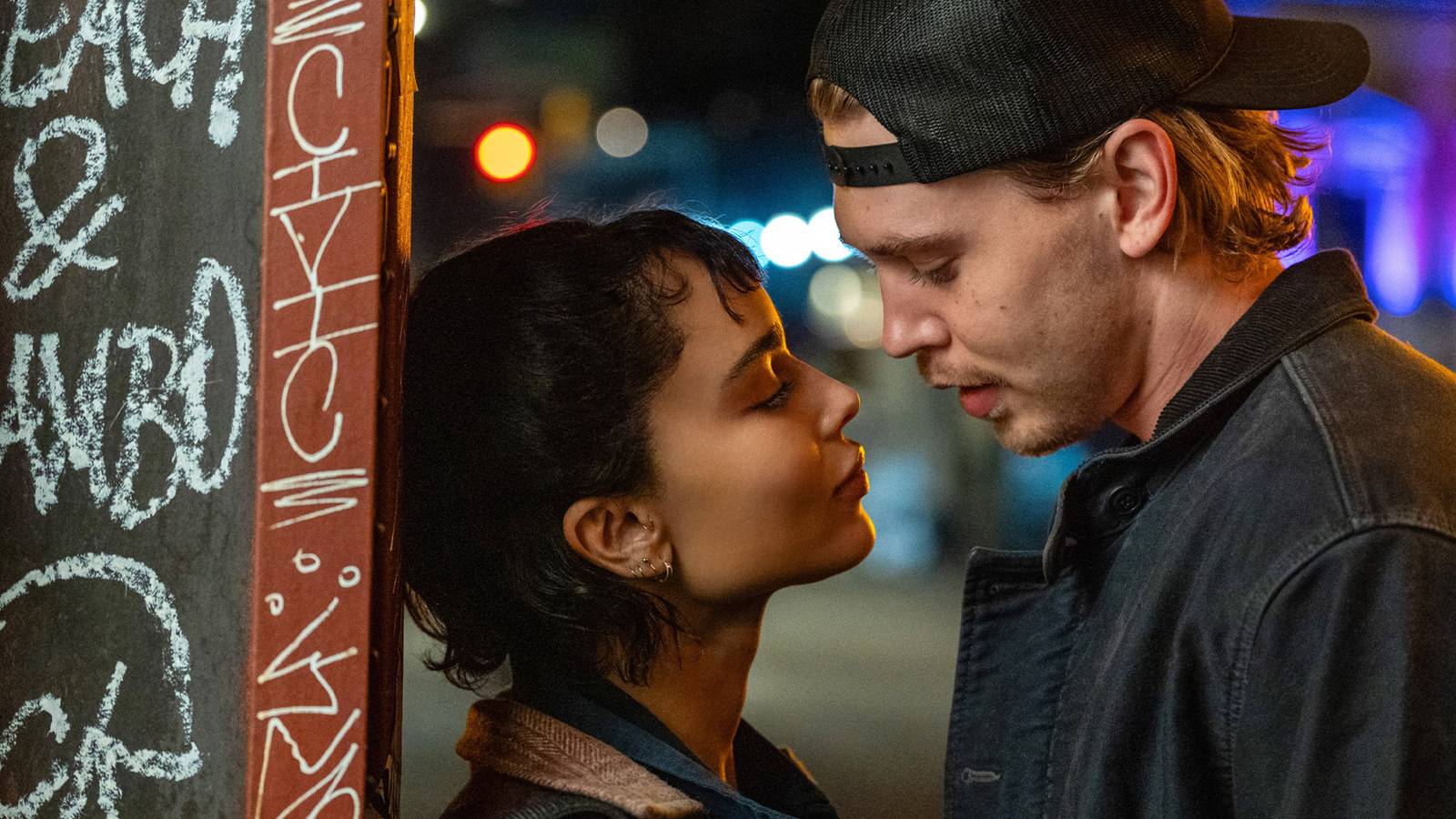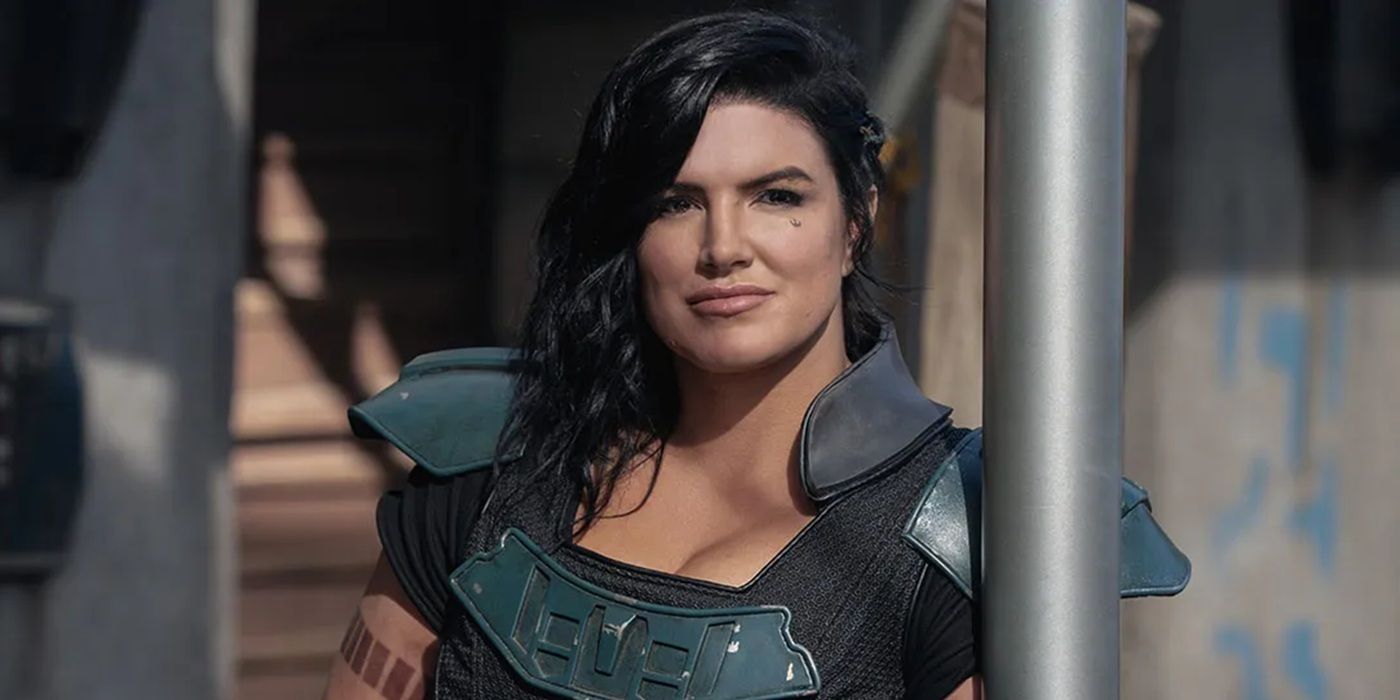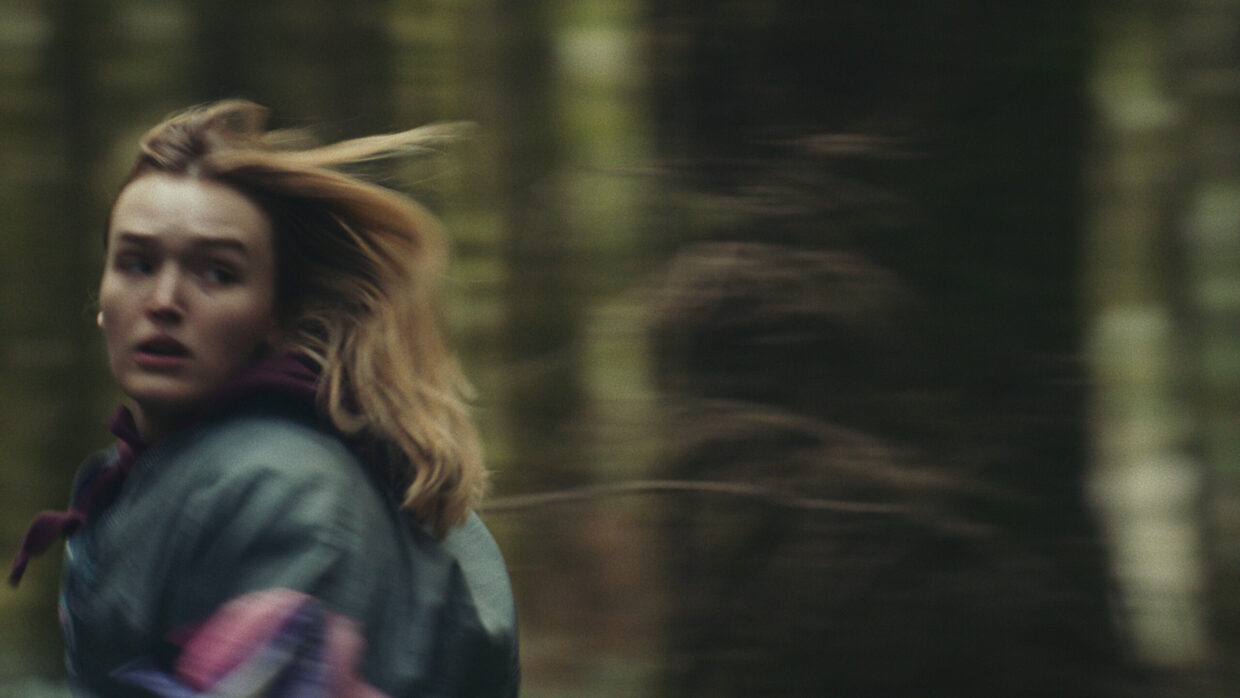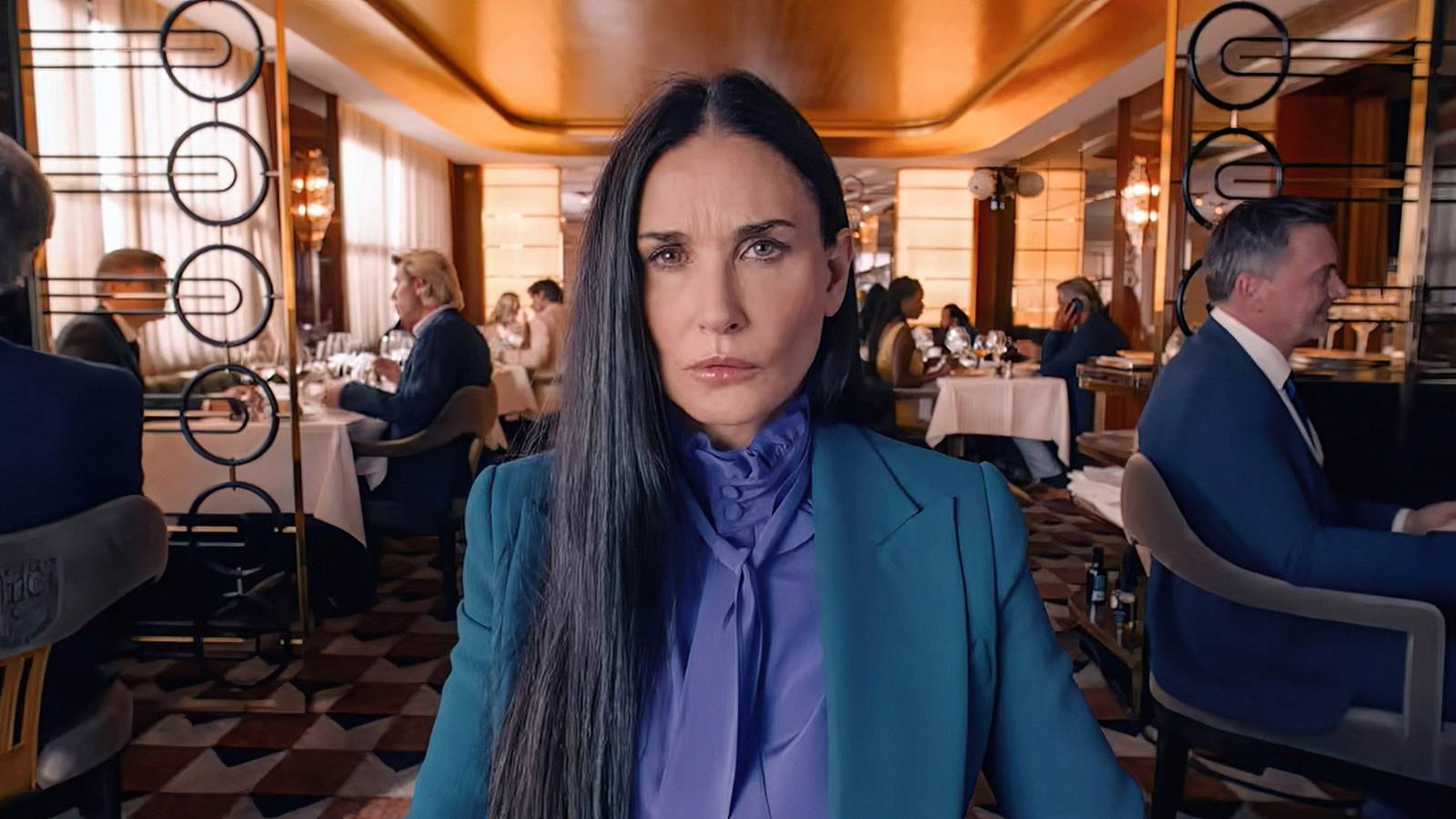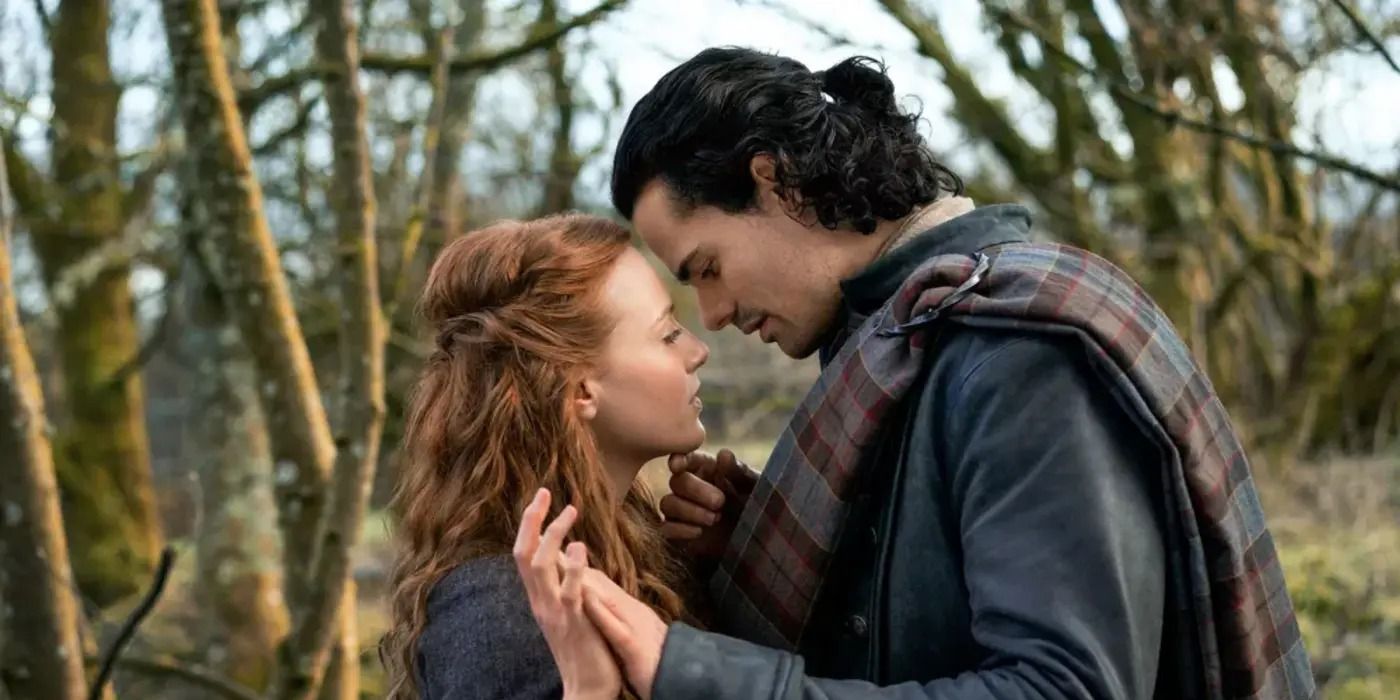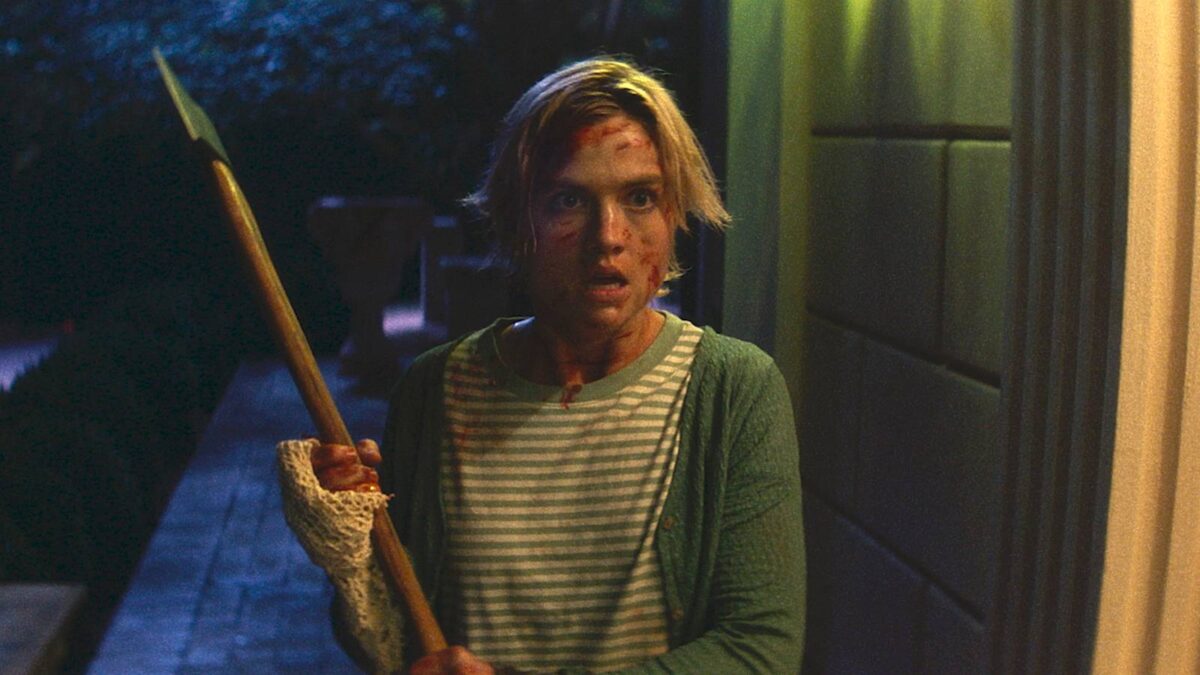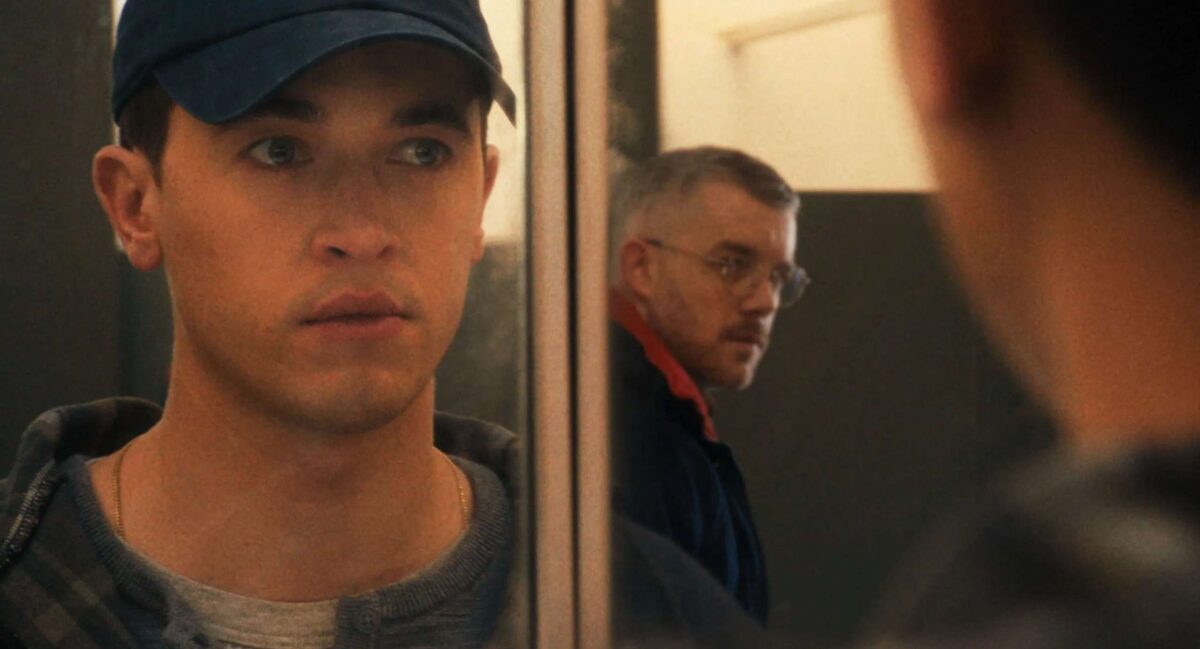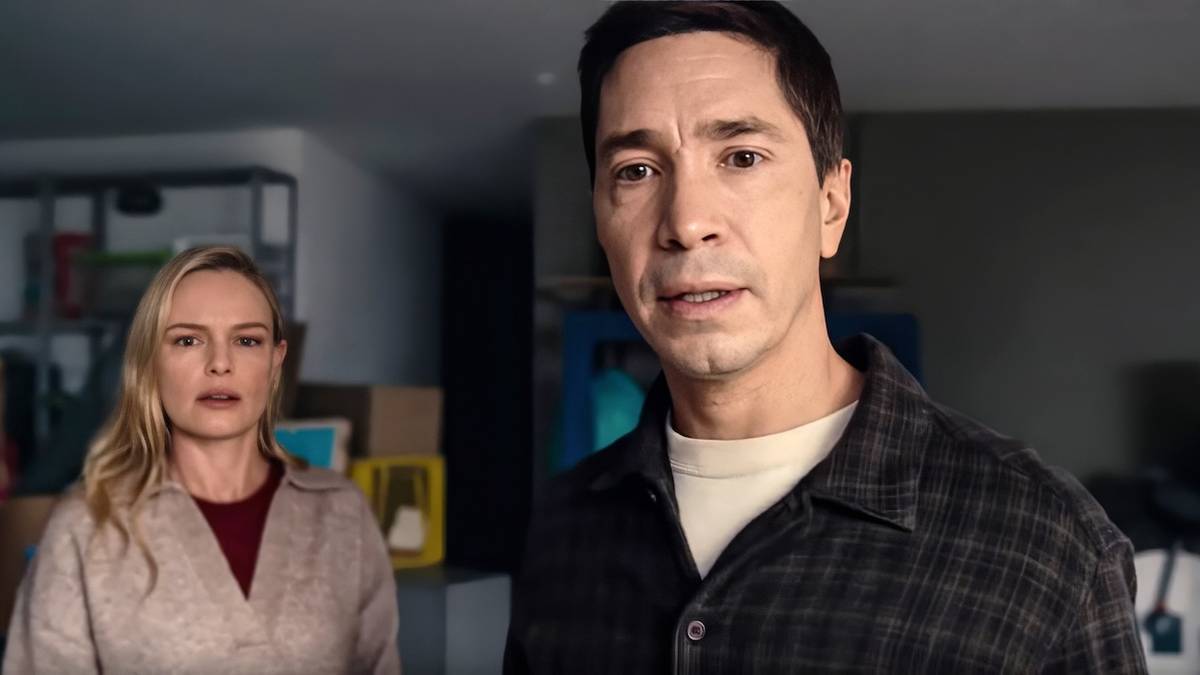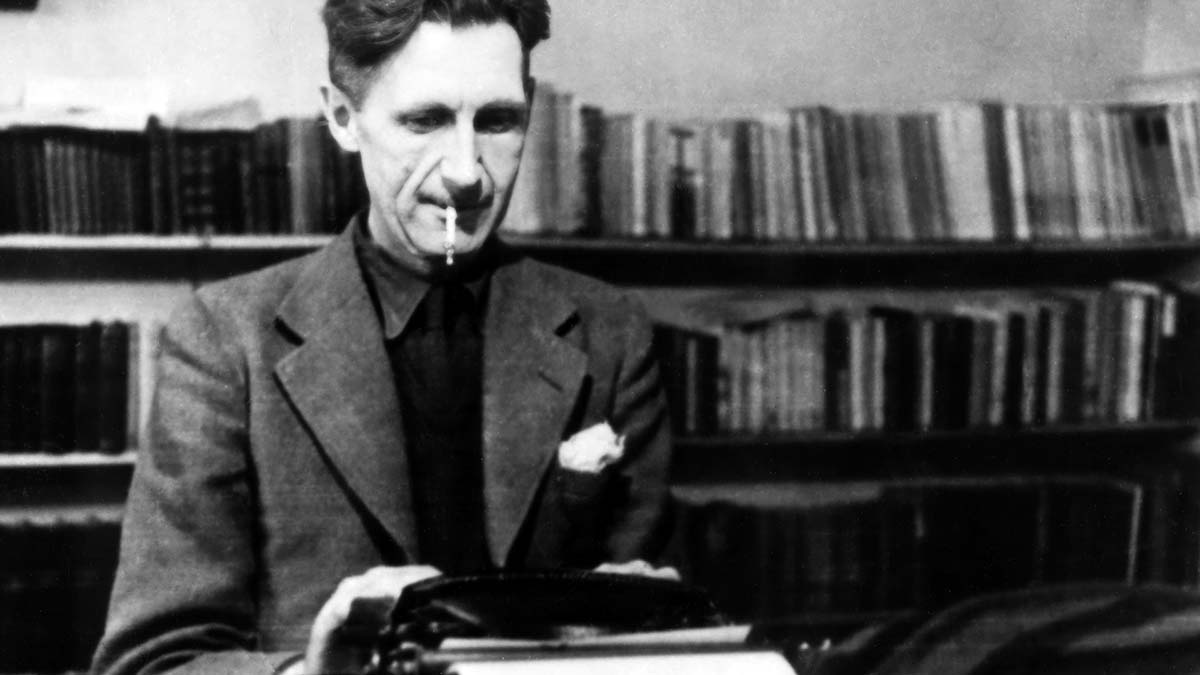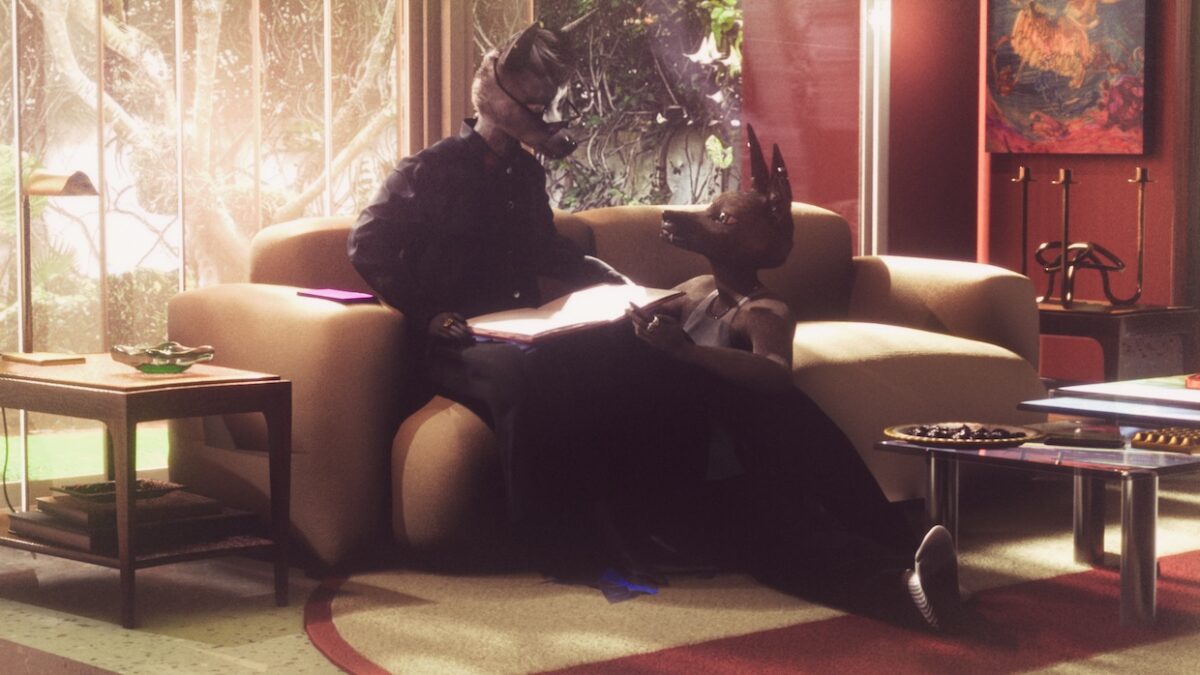
âWe Knew This Chemistry Is Something That We Could Count Onâ: Meriem Bennani and Orian Barki on NYFF Animated Feature, Bouchra
Oct 7, 2025
Bouchra
In Bouchra, 3D animated anthropomorphic animals may populate the world, but the intricacies of their lives are unmistakably human. This approach is par for the course for the film’s co-directors, the Brooklyn-based visual artists Meriem Bennani and Orian Barki, whose bite-size episodic project 2 Lizards captivated viewers during the early stages of lockdown in 2020—and landed them on our 25 New Faces of Film list the same year. In the latter project, the eponymous 3D-rendered lizards (voiced by Bennani and Barki) shoot the shit about celebrities, news coverage, pandemic-era anxieties and the morbid relief of being able to shirk social obligations.
With their feature debut, Bennani and Barki retain much of the “essence” of this past project, just with a much higher production value. The 3D animation is far from amateurish, and the real-life locations that they opt for were painstakingly replicated via the process of photogrammetry (more on that below). The filmmakers similarly voice two best friends—Barki stays a lizard, but Bennani instead takes the form of, per her co-director, a “very sexy” coyote. Yet the story here is an ambitious blend of personal revelation, improvisational dialogue and a metatextual narrative that elevates the straightforward hangout vibe of 2 Lizards.
Bennani voices the titular protagonist, a Moroccan-born, Manhattan-based filmmaker who finds herself creatively invigorated by a series of confessional phone calls with her Casablanca-based mother. These conversations—based on actual discussions that Bennani had with her own mother—address the strain that their relationship has suffered ever since Bouchra came out as queer. Thus she gets to work on storyboarding a feature that follows a fictionalized version of herself that returns to Casablanca for a family visit. Reconnection, resentment and exploration define this trip; Bennani’s own relatives voice their animated avatars, once again blurring whether these interactions are fictional, facsimile or somewhere in between. This question is never more pronounced as when Bennani and Barki (who voices Bouchra’s best friend) share a scene, the effortlessness of their rapport emphasizing the effectiveness of their collaboration.
I spoke with Bennani and Barki during the New York Film Festival, where Bouchra premiered on Saturday, September 27. It screens once more at 12:15pm on September 29.
Below, the duo provide insight on their intrinsic chemistry, the team that created the intricate details of the world that these characters inhabit and what the future of their artistic collaboration looks like.
Filmmaker: When we profiled you for the 25 New Faces back in 2020, you teased the fact that you were looking to develop another project together that was a blend of “animation technique and a certain tone.” Is Bouchra the result?
Bennani: I guess it’s the result, but not from a straight road. When we did 2 Lizards, it was a very spontaneous thing. I guess all things start like that. We were just playing and noticing things that were happening and that then became an entry point to making [short] films. After that, we got the opportunity to develop an animated TV show. We pitched it and didn’t manage to sell it. Maybe it was too weird, too indie, too many languages, not American-centric. We were like, “well, this is disappointing,” but we don’t really need an industry to make things. We like making things in our own way. I function more in the art world; we don’t wait for permission or big budgets. We got an opportunity to do a big exhibition that found us in the [Fundazione] Prada and we asked if we could get financing to do a feature. That allowed us to build an animation studio and start working on this.
Filmmaker: Can you elaborate on what the TV project was?
Bennani: It was a kind of dystopian sci-fi about the spywares that are developed by Israel and tested on Palestinians.
Barki: It was like this program that can basically implement a memory that didn’t happen. You would get a spam text message with a photo of yourself at an event that never happened. Once you open that photo, it implements that memory into your brain. There are two main characters: one of them is the daughter of the developer, the other is someone that she met online and lives in a different country. So they start using this software to sort of create memories together, even though they’ve never met.
Filmmaker: 2 Lizards is also episodic, albeit mostly 90-second installments. Can you tell me a little bit about how your collaboration developed to scale up for Bouchra?
Barki: This feature has some similar elements, like working with reality and then fictionalizing it. We also did that with 2 Lizards; not everything happened exactly the way it is in those little episodes. We really care about using reality to capture an essence, but we’re free enough to make stuff up too. That is something that definitely also exists in Bouchra, even though the process was a little different. We started with writing a script and didn’t want it to be as involved with reality or as personal. As we were writing the script, the meta element of the story started unfolding. Meriem had these conversations with her mom as research for the script to understand this [similar] relationship in a more dimensional way. We listened to these conversations and were like, “It’s very powerful.” We did not want to limit ourselves to making a full-on documentary, but [we decided to] use these conversations. That was very liberating because we felt a bit of a responsibility while writing the script to represent all these different queer experiences. Once we rooted it in Meriem’s personal story, we felt like, “Okay, now we can do whatever we want.”
Bennani: The other very big difference is that it wasn’t just us. We wrote the script with Ayla Mrabet, and four of us were the core team for this film: John Michael Boling, Jason Coombs and the two of us. John Michael and Jason had a project called Culture Sport. It’s an animation project that I’ve been a fan of for years. When we realized we could make a feature film, the first thing we did was look for people to work with us. Even though I do animation and we made the lizards ourselves, we knew we needed people who are way better than us. So John Michael did the cinematography ,and Jason did the modeling, rigging and animation.
Of course, there are so many more people involved, but those are the people that were there every day. We had the 2 Lizards technique of [using] these anthropomorphic 3D animal characters and these live action backgrounds, but how do we scale up? How do we make it much higher in production value, sustain a longer narrative and still keep this essence and also let it be this new thing? It was very different, actually, having a whole team and having to direct a bit more. You have to know what you want because you’re collaborating with people and have to communicate versus figuring it out on your own.
Filmmaker: This version of New York City is different in so many ways. For one, it’s a bustling metropolis instead of a pandemic-era ghost town, but I’m curious how you approached capturing the city in all of its chaotic glory.
Bennani: So there’s New York and Casablanca. Sometimes we also shot a few shots in Rabat, but mostly in Casablanca. Whenever [the scene] is indoors, it’s 3D. Then we also have photogrammetry, which is this process of 3D scanning. It’s kind of like a collage of photos and 3D scans to recreate some locations [so that we’re then] able to do a top shot, even though we can’t afford a crane. Casablanca is a familiar place for me and we spent a lot of time there with the team. But we’re New Yorkers.
Barki: We wanted to go for a darker look in general. On an impressionist level, it was reflecting a bit of a mood that we were in while we were making the movie—just dealing with this story, our personal lives and collectively in the world. It put us in this mood of seeing New York with a melancholy, darker look to it, whereas in 2 Lizards there’s a romantic innocence to it.
Bennani: But John Michael is responsible for a lot. It’s not like a chain of command, it’s all artists bringing in some things. Then by the time an image is ready, it’s a new idea [compared to] our storyboard and animatic. It’s great. The film has our storyboards [hung up behind Bouchra’s desk] because of the meta layer. You can even see how the film was made in the film itself.
Filmmaker: As New Yorkers, were there any specific spots you wanted to capture? At the press screening, people definitely reacted when the subway stopped at Myrtle-Broadway.
Barki: A lot of it is the financial district. I think that’s part of the darker, moodier vibe that we wanted to capture for this film. It’s also more empty at night, because otherwise you can’t film places without people.
Bennani: [In 2 Lizards] it was possible because the streets were empty so we were able to shoot an empty New York, even Times Square. But for this film, there are all of these little streets and financial districts that were easy to film. In Casablanca it’s the Centre Ville, a specific neighborhood that’s very beautiful and has a mood. I don’t know that there was a specific way we wanted to show New York, it’s more like showing the pace of her life in New York—having this shitty Midtown apartment, [all this] time alone, going out with her ex, going out with her friend. As close as possible to our life is the most specific we can get.
Filmmaker: We’ve touched on Casablanca a few times. You brought up how you depicted New York as this very dark place, but there’s a sunniness to the Casablanca scenes that contrasts the real emotional weight of them. I’m sure some of that has to do with the actual climate, but Meriem obviously has a personal relationship to the city and you mentioned that the crew also spent some time there. How did you capture the specifics of the city while also allowing for a less familiar gaze?
Bennani: We went and we saw it with the production team, which was Casablanca-based, but I wanted to make sure that John Michael, because of the cinematography, spent time there. There are so many things that are shot there. There are so many images [that represent Casablanca], but they’re always these touristy images. I wanted him to get a feel for it. I also knew how I wanted to capture it, in a way, because I had this pile of iPhone images. Every time I go there, I take photos. I have hundreds of images that I have organized in groups: restaurants that I like, cafes, outfits, pedestrians. So whenever we needed to make extras or think about what this ashtray looks like, I had it. John Michael and I spent three weeks there. While we were recording some actors, he was going around scanning and doing photogrammetries of things in the streets: fountains, furniture, things that you won’t think about modeling, like a random thing on the street that you don’t even know what it’s called, but it sells it. Like the way this specific sidewalk is. We also went out a lot in the neighborhood where we filmed and went to all these bars, so he had a specific experience with all of the lighting.
Filmmaker: And is Bouchra’s parents house based on your parents house, or is it a made-up setting?
Bennani: She’s kind of a Frankenstein of so many types of houses that I’ve seen, [including] from old design magazines from Morocco that my parents collect. I scanned a lot of them and we made a full 3D [model] of it and then had a reference for each [piece of] furniture and every detail that you see.
Filmmaker: Meriem, you voice the protagonist, and Orian, you voice her best friend. How did you straddle the line between presenting your own personalities, vocal inflections and musings while embodying fictional characters?
Bennani: We really played ourselves. We didn’t try to be different. The more spontaneous and real we are in how we say things, the better it’s going to be, because we always go for nuance and specificity. We keep the stutters, we keep the hesitations, because otherwise it’s just going to be animals [laughs].
Barki: It was very easy to voice my character. I think that there’s something about our voices together that just works. That was a chemistry that we already had in 2 Lizards. Even watching the movie now with an audience, every time there’s a scene with us together, I can feel the air of engagement in the theater kind of heighten. We knew this chemistry is something we could count on.
Bennani: I think it’s your voice, because I’m in every scene! The second you start speaking, people are laughing so hard.
Barki: It’s true [laughing]. It has that quality to it. But I also think it’s our chemistry and our dialogue with each other. In a way, the opposite thing was harder, because we were writing for a lot of other characters talking in their [own] voice. Meriem kept telling me when we were writing the script, “You’re making them speak like you! They can’t land that joke because they’re a different person.” I had to learn how to do that.
Bennani: But we made people improvise.
Barki: We ended up keeping the dialogue writing pretty loose, just the story beats that we wanted to hit. Then we would just go and record it in an improvisational style and edit it.
We made this film at first for an exhibition; it was a medium-length film with the same storyline. Then we had an opportunity to extend it into a feature film because we wanted it to exist in the film world and do festivals. After we showed the first version in the exhibition, we came back and I told Meriem, “I think we should add more scenes with the two of us because it’s something that people really react to.” So we did a little bit of that, but we ended up adding a lot of scenes with the main character and her ex-girlfriend. But my character speaks more in the longer version.
Filmmaker: In terms of the character design, how much were you involved in shaping their look? Are they emblematic of either of your tastes, styles, etcetera?
Bennani: The way it worked is that we made these drawings, then we gave them to John Michael and Jason when we started working with them. Jason was modeling the characters to have the same essence as the drawings and then passed them to John Michael. They would make like a hundred versions of each character, where there’s just the slightest difference in the eyes. But at the same time, these characters are so specific—in the same way that if I changed one little thing about your face, you wouldn’t be you anymore. So we would look at all of these [designs] and choose together.
Barki: There’s a picture of my character next to a picture of me doing the same pose. If you look at it side by side, you see that captures my essence. For my character, I stayed a lizard. Meriem is the one who made the bigger transition.
Bennani: But she is not supposed to look like me. We didn’t design her after me.
Barki: Yeah, my character is designed more after me. I also chose her big hoodie. I made the graphic for the back, but because the lighting is very film noir, you never see it. And for [Meriem’s] character, she had a stylist, our friend Becky [Akinyode]. It’s all real clothing. I think Meriem’s character is very sexy.
Filmmaker: How do you see your collaboration being shaped going forward?
Bennani: We have a company called 2 Lizards that we started for this film. We think of 2 Lizards as whenever we work together. But also if we work separately, we’re always so involved in each other’s projects that those projects would also fall under 2 Lizards. We think of it maybe as a type of filmmaking, like a tone that we have together. We want to make more movies together. We want to make more animated films with John Michael and Jason. But we also have our separate things.
Barki: Meriem already started writing our next film. I’ve been kind of busy doing a little bit of freelance work and working on another passion project. Meriem has a successful career as an artist, so she’s doing an exhibition.
Filmmaker: Is there anything you can share about the film?
Bennani: Oh, no, I wrote like five pages of it!
Publisher: Source link
Erotic Horror Is Long On Innuendo, Short On Climax As It Fails To Deliver On A Promising Premise
Picture this: you splurge on a stunning estate on AirBnB for a romantic weekend with your long-time partner, only for another couple to show up having done the same, on a different app. With the hosts not responding to messages…
Oct 8, 2025
Desire, Duty, and Deception Collide
Carmen Emmi’s Plainclothes is an evocative, bruising romantic thriller that takes place in the shadowy underbelly of 1990s New York, where personal identity collides with institutional control. More than just a story about police work, the film is a taut…
Oct 8, 2025
Real-Life Couple Justin Long and Kate Bosworth Have Tons of Fun in a Creature Feature That Plays It Too Safe
In 2022, Justin Long and Kate Bosworth teamed up for the horror comedy House of Darkness. A year later, the actors got married and are now parents, so it's fun to see them working together again for another outing in…
Oct 6, 2025
Raoul Peck’s Everything Bagel Documentary Puts Too Much In the Author’s Mouth [TIFF]
Everyone has their own George Orwell and tends to think everyone else gets him wrong. As such, making a sprawling quasi-biographical documentary like “Orwell: 2+2=5” is a brave effort bound to exasperate people across the political spectrum. Even so, Raoul…
Oct 6, 2025
